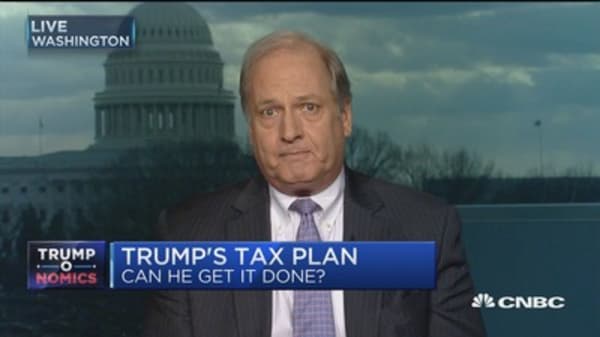After issuing a blizzard of executive orders in his first weeks in office, President Donald Trump is again dangling his signature campaign promise of deep tax cuts for American businesses and households.
Facing pressure to release a specific plan, Trump promised a group of airline executives Thursday that a formal proposal is coming, soon.
"Lowering the overall tax burden on American business is big league ... that's coming along very well," he said. "We're way ahead of schedule, I believe. And we're going to announce something, I would say, over the next two or three weeks that will be phenomenal in terms of tax," Trump said.






